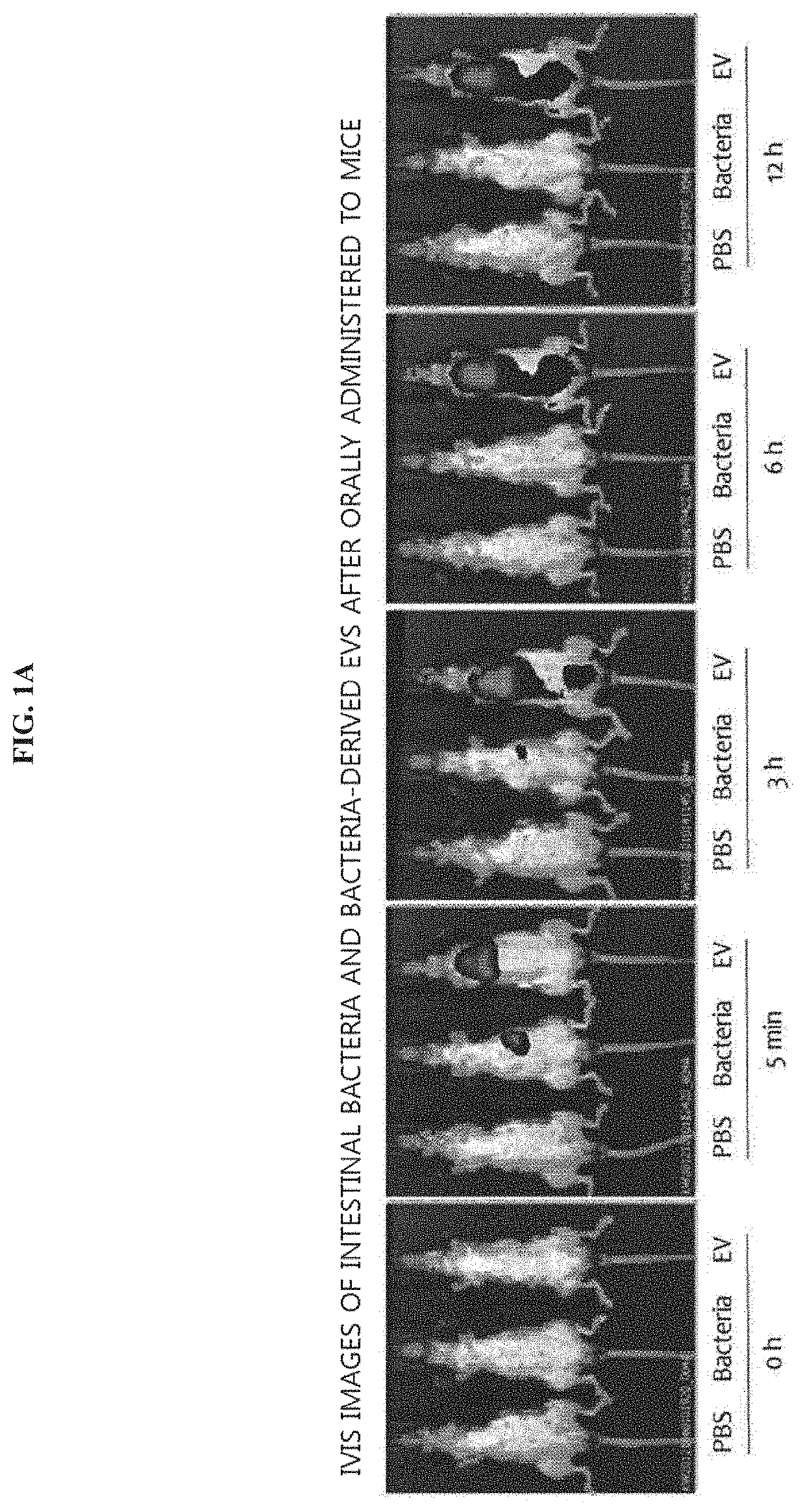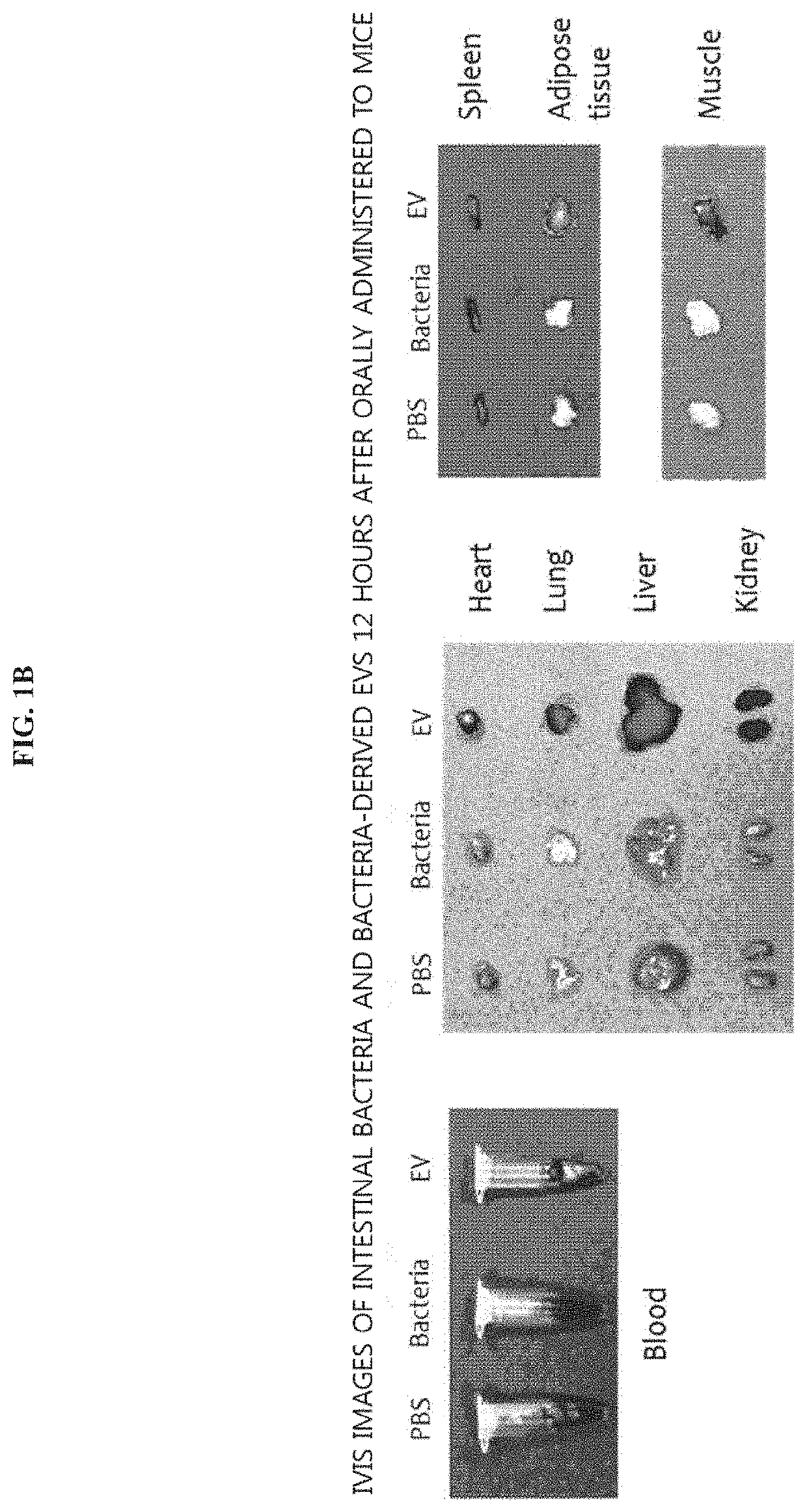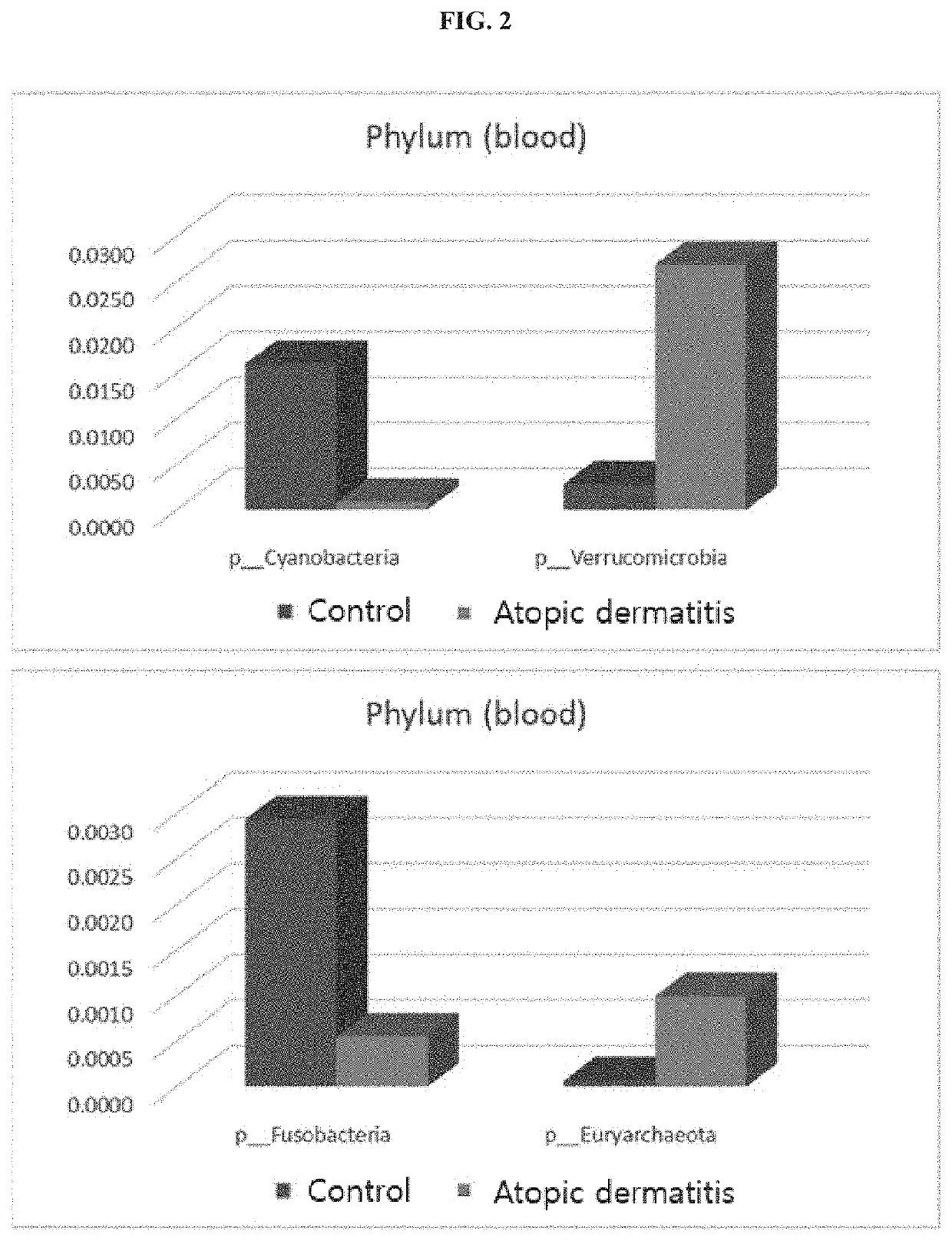Method for diagnosing atopic dermatitis through microbial metagenomic analysis
a technology of microbial metagenomic analysis and atopic dermatitis, which is applied in the field of diagnosing atopic dermatitis through microbial metagenomic analysis, can solve the problems of serious onset of atopic dermatitis, and achieve the effects of preventing the onset of atopic dermatitis, and reducing the risk of infection
- Summary
- Abstract
- Description
- Claims
- Application Information
AI Technical Summary
Benefits of technology
Problems solved by technology
Method used
Image
Examples
example 1
Analysis of In Vivo Absorption, Distribution, and Excretion Patterns of Intestinal Bacteria and Bacteria-Derived Extracellular Vesicles
[0079]To evaluate whether intestinal bacteria and bacteria-derived extracellular vesicles are systematically absorbed through the gastrointestinal tract, an experiment was conducted using the following method. More particularly, 50 μg of each of intestinal bacteria and the bacteria-derived extracellular vesicles (EVs), labeled with fluorescence, were orally administered to the gastrointestinal tracts of mice, and fluorescence was measured at 0 h, and after 5 min, 3 h, 6 h, and 12 h. As a result of observing the entire images of mice, as illustrated in FIG. 1A, the bacteria were not systematically absorbed when administered, while the bacteria-derived EVs were systematically absorbed at 5 min after administration, and, at 3 h after administration, fluorescence was strongly observed in the bladder, from which it was confirmed that the EVs were excreted...
example 2
Vesicle Isolation and DNA Extraction from Blood and Urine
[0081]To isolate extracellular vesicles and extract DNA, from blood and urine, first, blood or urine was added to a 10 ml tube and centrifuged at 3,500×g and 4° C. for 10 min to precipitate a suspension, and only a supernatant was collected, which was then placed in a new 10 ml tube. The collected supernatant was filtered using a 0.22 μm filter to remove bacteria and impurities, and then placed in centrifugal filters (50 kD) and centrifuged at 1500×g and 4 for 15 min to discard materials with a smaller size than 50 kD, and then concentrated to 10 ml. Once again, bacteria and impurities were removed therefrom using a 0.22 μm filter, and then the resulting concentrate was subjected to ultra-high speed centrifugation at 150,000×g and 4 for 3 hours by using a Type 90ti rotor to remove a supernatant, and the agglomerated pellet was dissolved with phosphate-buffered saline (PBS), thereby obtaining vesicles.
[0082]100 μl of the extrac...
example 3
Metagenomic Analysis Using DNA Extracted from Blood and Urine
[0083]DNA was extracted using the same method as that used in Example 2, and then PCR was performed thereon using 16S rDNA primers shown in Table 1 to amplify DNA, followed by sequencing (Illumina MiSeq sequencer). The results were output as standard flowgram format (SFF) files, and the SFF files were converted into sequence files (.fasta) and nucleotide quality score files using GS FLX software (v2.9), and then credit rating for reads was identified, and portions with a window (20 bps) average base call accuracy of less than 99% (Phred score <20) were removed. After removing the low-quality portions, only reads having a length of 300 bps or more were used (Sickle version 1.33), and, for operational taxonomy unit (OTU) analysis, clustering was performed using UCLUST and USEARCH according to sequence similarity. In particular, clustering was performed based on sequence similarity values of 94% for genus, 90% for family, 85%...
PUM
| Property | Measurement | Unit |
|---|---|---|
| size | aaaaa | aaaaa |
| size | aaaaa | aaaaa |
| size | aaaaa | aaaaa |
Abstract
Description
Claims
Application Information
 Login to View More
Login to View More - R&D
- Intellectual Property
- Life Sciences
- Materials
- Tech Scout
- Unparalleled Data Quality
- Higher Quality Content
- 60% Fewer Hallucinations
Browse by: Latest US Patents, China's latest patents, Technical Efficacy Thesaurus, Application Domain, Technology Topic, Popular Technical Reports.
© 2025 PatSnap. All rights reserved.Legal|Privacy policy|Modern Slavery Act Transparency Statement|Sitemap|About US| Contact US: help@patsnap.com



